| Article ID | Journal | Published Year | Pages | File Type |
|---|---|---|---|---|
| 4269444 | The Journal of Sexual Medicine | 2015 | 7 Pages |
IntroductionPrevious studies have reported that lower testosterone concentrations are associated with cardiovascular autonomic neuropathy (CAN), a risk factor for cardiovascular events. However, no studies have examined this relationship in men with type 1 diabetes, who are at high risk for CAN.AimThe aim of this study was to examine the associations between testosterone concentrations and measures of CAN in a large, well-characterized cohort of men with type 1 diabetes.MethodsWe conducted an analysis of men in the Diabetes Control and Complications Trial (DCCT), a randomized trial of intensive glucose control, and its observational follow-up the Epidemiology of Diabetes Intervention and Complications (EDIC) Study. Testosterone was measured by liquid chromatography mass spectrometry in stored samples from EDIC follow-up years 10 and 17. Regression models were used to assess the cross-sectional relationships between testosterone and CAN measures.Main Outcome MeasuresThe main CAN measure from EDIC follow-up year 17 was a standardized composite of R–R variation with paced breathing < 15, or R–R variation 15–20 combined with either a Valsalva ratio ≤ 1.5 or a decrease in diastolic blood pressure > 10 mm Hg upon standing. Continuous R–R variation and Valsalva ratio were secondary outcomes.ResultsLower total and bioavailable testosterone concentrations at follow-up years 10 and 17 were not associated with the presence of CAN at year 17. In analyses using Valsalva ratio as a continuous measure, higher total (P = 0.01) and bioavailable testosterone concentrations (P = 0.005) were associated with a higher (more favorable) Valsalva ratio after adjustment for covariates including age, body mass index, smoking status, hypertension, and glycemia.ConclusionsTestosterone levels are not associated with CAN among men with type 1 diabetes. Although testosterone is associated with a higher Valsalva ratio, a more favorable indicator, the clinical significance of this association is not known.
